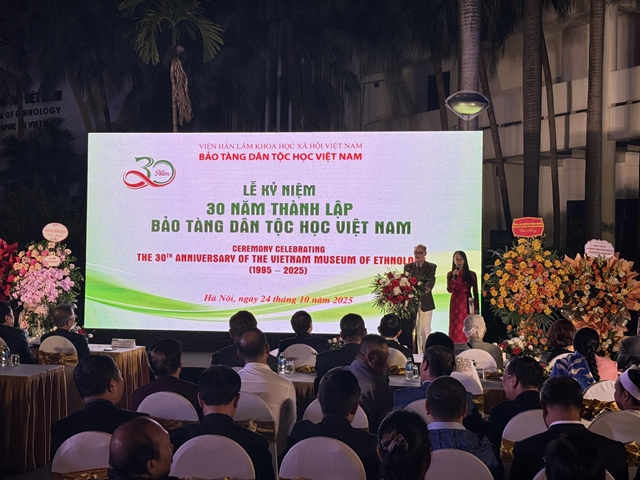 Life & Style
Life & Style

Artist Trần Huy Oánh released his book of paintings, titled Kí Họa Thời Chiến - Tâm Huyết Còn Mãi Với Thời Gian (Wartime Sketches – Everlasting Devotion), on November 6 in Hà Nội.
 |
Artist Trần Huy Oánh released his book of paintings, titled Kí Họa Thời Chiến - Tâm Huyết Còn Mãi Với Thời Gian (Wartime Sketches – Everlasting Devotion), on November 6 in Hà Nội. The book includes 189 sketches illustrating the war time in Việt Nam, categorised by time period and place, including Thanh Hóa, Nghệ An, Quảng Bình, Quảng Trị, Trường Sơn mountains and Tây Nguyên (Central Highlands). The collection functions as a kind of pictorial memoir.
Born in 1937 in the northern province of Hà Nam, the artist graduated from the Hà Nội College of Fine Arts. He was a teacher and deputy-principle of the college from 1984 - 98. Two of his oil-paintings, entitled Sau Ngày Đi Mỏ (After Work at Coal Mine) and Tương Lai (Future), will be auctioned at Chọn Auction House’s 8th Art Auction on November 19.
The veteran teacher-artist spoke about difference between fine arts teaching during the war time and at the present.
How could you have time travelling so widely and absorbing so many details for the sketches as you were teaching at Hà Nội College of Fine Arts?
In those days, teaching fine art meant gaining experiences from life. We usually organised field trips for both teachers and students. We stayed with soldiers and guerrilas to observe their daily lives and depict them in paintings. Students are trained to get experiences for their inspiration. These trips enabled me to paint.
I always tell my students that it is very important to get experiences from life.
Could you compare your teaching during the war to your teaching at present?
I see the students at present lack ideals and passion. Almost all of them study only for their degree. It is not just my personal opinion. Many people say that. In the past, there were many students trying their best to enter the fine arts college despite failing the entrance exam many times. Artists of my generation and older have a passion for painting and we desire to create without thinking of the benefits. At present, there are not many young artists like us.
What has created this situation, in your opinion?
I think there are many reasons but I cannot explain them all. For example, earning money is a pressure students feel. In the past, we studied seriously and didn’t mind about earning money. Painting must not be seen as a money-getter.
There are many contemporary fine art trends luring young artists. But I think that to approach the latest trend fine art students need to be educated at a basic level. I see many young artists who just graduate and have some art work and think they have succeed. These artists’ aesthestics have not reached a high level.
It’s a fact that not many people buy paintings. How can the students earn money?
Việt Nam has not had a market for artworks. It depends on economic development and training in aesthetics. I don’t mention about poor people. But many rich people who spend hundreds of million of đồng for a party are unwilling to buy a painting at price of 10 million of đồng. It is a real situation.
New graduates have to earn a living in different ways according to their abilities, such as painting commissioned works, decorating homes, doing illustrations, etc. They can do anything for daily earnings.
Becoming a professional artist depends on both ability and conditions.
Your recently launched book includes sketches that you made in the 1970s. Could you tell about your memories during those years?
I remember field trips with my students in the war time. Once we went to communities bordering the Bến Hải River at the 17th parallel in the central province of Quảng Trị, where there were fiercest fightings. We saw casualties but we stayed in good spirits. Local Vân Kiều ethnic people in Thúc and Khe Tăm villages let us live in a house on stilts to give us favourable conditions for working.
Another trip to a logistic army station on Trường Sơn Mountain Range, my colleagues and I sketched soldiers and volunteers. When officers learned that I was a co-author of a popular poster about President Hồ Chí Minh, the station head asked me to repaint it in a larger size. I painted it on a canvas and the painting was hung in the forest as a challenge to US bombings.
It seems that more danger meant more inspiration. During the war time, we were enthusiastic and didn’t feel scared of the death. — VNS




